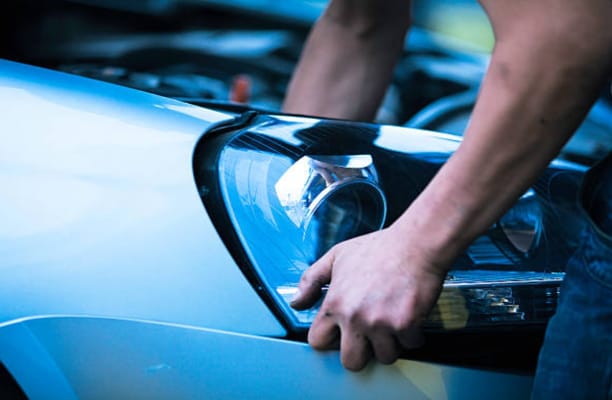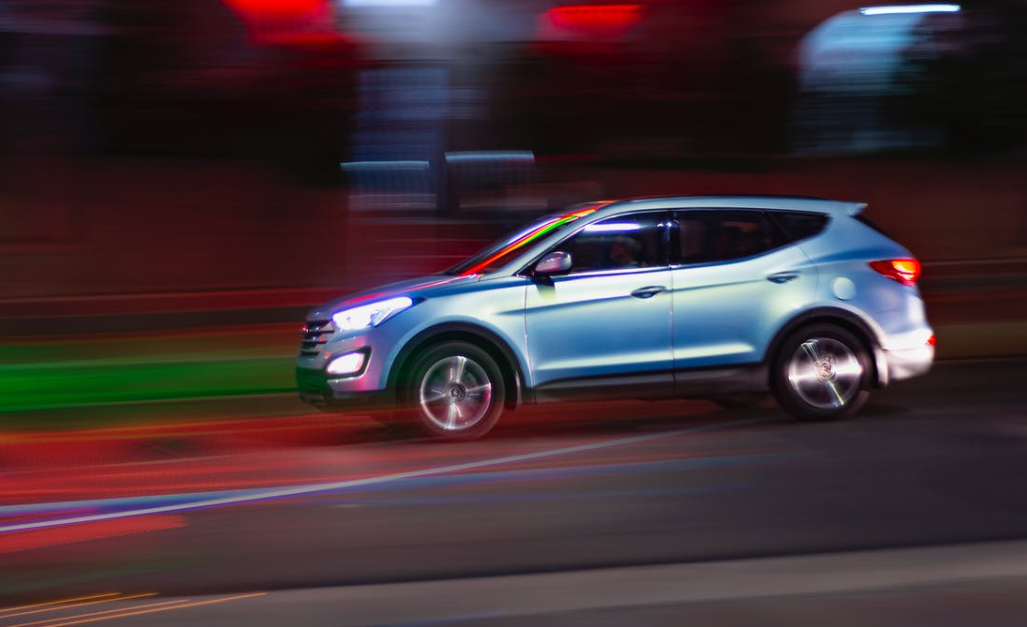One or Both Headlights Not Working? Learn the Causes & Fixes (2025)
Key Takeaways:
If one headlight bulb is not working: it’s most likely a burned-out bulb. Replacing the faulty bulb usually resolves the issue.
If both headlight bulbs are not working: The problem could be a blown fuse, bad relay, or damaged wiring. These components should be inspected before replacing bulbs.
If headlights not working after replacing bulbs: Consider other causes such as a defective new bulb, improper installation, or loose connection. If those are fine, check the fuses, wiring, relay, or headlight control module for power delivery issues.
Introduction:
Your car’s headlights are powered by an electrical system that includes bulbs, relays, fuses, and wiring. When you turn on the switch, the relay allows electricity to flow from the battery to the headlight bulbs. When something in this system breaks down, your headlights are not working. Don’t worry, we’ll guide you through the most common problems and how to fix them.
What Would Cause Headlights to Not Work?
Below are some common cause of headlight failure:
Burned-out bulb
The most common reason for a single headlight not working is a burned-out bulb. Bulbs, especially halogen ones found in older vehicles, have a limited lifespan. Constant use, vibration, and temperature changes can cause a bulb’s filament to break, resulting in a burned-out bulb.
Replacing the broken bulb, preferably with a durable LED headlight bulb, should fix the issue.
Driving frequency also impacts a headlight bulb's lifespan. Since low beams are used far more often than high beams, it is more common for a low beam bulb to burn out. You may find questions like “Why is one of my low beam headlights out?” or “One headlight is out, but the high beams work” are more common than the reverse.
Diagnostic Tips: Swap the bulb from the working side into the non-working side. If it works there, the bulb was bad. Or inspect the filament (if visible).
Blown Fuse or Bad Relay
Two common electrical problems that can cause headlights to stop working are blown fuses and faulty relays.
Fuses in your vehicle act like circuit breakers. When too much current passes through a circuit, the fuse will break the connection to protect the wires and components. Your headlight high and low beams have separate fuses, so if either fuse blows, that light will go out.
Each headlight also has its own built-in relay switch. Relays are meant to last for ages, but over time heat, resistance and constantly switching on and off can cause them to fail. If your relay goes bad, it might stop power from getting to one of your headlights.
Diagnostic Tips: Consult the owner's manual or fuse box cover to identify the fuse for that headlight. Remove it and inspect whether the internal metal strip is broken. Use a test lamp or multimeter to verify voltage on both sides of the fuse.
If you suspect a faulty relay, swap the relay with an identical one (if available) from another circuit to test. Listen for the clicking relay sound when switching lights on/off.
Damaged or Faulty Wiring
Damaged or faulty wiring can cause a headlight to stop working. As your vehicle ages, wiring becomes corroded, frays, or breaks, disrupting the flow of electricity. This will prevent electricity from reaching your headlight bulbs. Sometimes loose or faulty connections between wires and connectors are to blame. Since wiring is run individually to each side, damage typically affects only one side.
Diagnostic Tips: Trace the wiring from fuse/relay to the headlight on the dead side. Use a multimeter to check continuity, voltage under load, and inspect for broken insulation, pinched sections, or chafing.
Faulty Light Switch
The light switch and relay work together to turn your headlights on and off. Your light switch sends a signal to the relay, which then provides power to the headlights. If either the switch or relay are malfunctioning, your headlights won't come on as expected. This is not common but does happen sometimes.
Diagnostic Tips: This tends to be a more complex diagnosis: measure input and output voltages at the switch/module, check for internal faults, or compare behavior when switching beams.
Water or Corrosion in the Headlight
Water or condensation can degrade the socket, cause shorting, or cause unexpected behavior. Over time, the internal reflector or wiring inside the housing can also degrade.
Diagnostic Tips: Open the headlight housing (if possible) and look for signs of moisture, corrosion, or burnt wiring. Dry it and clean contacts.

How to Troubleshoot Headlights Not Working
Start with the Headlight Bulbs
To check: Turn on your headlights and open the hood. Inspect the large, round bulbs in your headlight housings. If the filaments inside any bulbs are broken or detached, or bulbs look very dark, the bulbs likely need replacement.
To fix this problem, purchase and reinstall the new replacement headlight bulbs that match your vehicle make and model.
Test the Fuses
If the bulbs are intact, check the fuses next. Locate the fuse box, typically under the hood or in the driver's side footwell. Refer to the owner’s manual to find the headlight fuse. Pull out the fuses labeled for your headlights or "HL" to examine the metal strip inside. If broken or melted, the fuse is blown.
To fix: Purchase replacement blade fuses that match the amperage rating on the fuse label. Remove the old fuses and install the new ones. Start your vehicle and test the headlights to ensure the new fuses fixed the issue.
Inspect the Headlight Relay
The headlight relay is responsible for supplying power. Try swapping it with another identical relay (like the horn relay). If the headlights start working, you’ve found the problem—replace the faulty relay.
See If Power Is Reaching the Socket
Turn on your headlights and use a multimeter to check if electricity is reaching the socket. If there’s no voltage, the issue could be with the wiring or the headlight switch.
Check for Wiring and Connectors Issue
Visually inspect all wiring and connections related to the headlight circuit for any that are loose, frayed, corroded or otherwise damaged.
To fix: Tighten any loose wiring/connections. Clean corroded components thoroughly. Replace or repair severely damaged wiring. Once complete, re-test your headlights to confirm the issue is resolved.
Test the Headlight Switch
A faulty switch may be to blame. Use a multimeter to check for continuity when the switch is turned on. If there’s no continuity, you’ll need to replace the switch.
Make Sure the Ground Connection Is Secure
Locate the ground wire and ensure it’s attached to a clean, rust-free metal surface. Use a multimeter to confirm a good connection.
See a Mechanic for a Diagnosis
If the problem persists, it's best to consult a mechanic. They have the expertise and specialized equipment to diagnose the headlight system accurately.
Headlight issues can be a bit tricky because there are several possible causes depending on the situation. Let’s break down the most common scenarios and how to fix them.

One Headlight Bulb Not Working, How to Fix It?
Common Cause: Most single-headlight issues are simple to fix, and starting with a bulb check is usually the fastest solution.
How to Fix: Remove the bulb and inspect it. If the filament is broken or the glass is blackened, replace it with the correct type and wattage.
Other Possible Issues:
Blown Fuse: Check the fuse associated with that headlight and replace if necessary. Some vehicles have a separate fuse for each headlight.
Faulty Relay: Swap the headlight relay with a similar relay to test. Replace if faulty.
Wiring Problems: Inspect connectors and wiring for corrosion or looseness. Repair or clean as needed.
Headlight Switch: If all else is fine, the switch may be defective.
Both of My Headlight Bulbs Not Working, How to Fix It?
Common cause: If both headlights go out at the same time, it’s probably not the bulbs. A shared electrical issue is more likely the cause.
Start by checking the headlight fuse inside your fuse box. If it’s blown, replace it with one that has the same amperage. A fuse that keeps blowing could mean a short circuit somewhere in the wiring.
Next, inspect the headlight relay. This small component controls power to your headlights. You can swap it with a similar relay from another system, like the horn, to see if it’s the problem.
If the relay works fine, test the headlight switch. A faulty switch won’t send power to the bulbs. Use a multimeter to check for continuity.
Now take a look at the wiring and connectors. Damaged wires, loose plugs, or corrosion can interrupt power. Pay special attention to the ground wires—they must be clean and tight.
Don’t overlook your car’s charging system. A weak alternator or battery can cause voltage drops, which may affect your headlights.
Lastly, check the headlight housing for moisture. Water can cause short circuits or corrode the electrical parts inside.
If none of these steps solve the issue, it’s time to have a mechanic take a closer look.
Headlight Not Working After Replacing Bulb, How to Fix?
If one headlight still doesn't work after replacing the bulb, consider the following possible reasons and fixes:
Faulty new bulb - Check the new bulb for any defects and replace it with another new bulb if necessary.
Incorrect bulb installation - Ensure that the bulb is properly seated in the socket and the electrical connector is securely attached.
Wiring or electrical issue - Revisit sections 2.2 and 2.3 to check for any issues with fuses, wiring connections, or the headlight switch.
Relay or module problems - Inspect the relay and module as described in section 2.4 and replace any faulty components.
What’s Next?
In most cases, if your headlights aren’t working properly, the root cause is a burned-out low beam bulb.
But before you head to the auto parts store or start shopping online, you need to make sure you’re getting the right bulb for your vehicle.
How Do I Find the New Headlight Bulbs Fit For My Vehicle
This information is usually found in your vehicle owner's manual, but you can also look it up online using your vehicle’s make, model, and year. Online car bulb stores like SEALIGHT often offer bulb finder tools on websites to make this process easier.
If you frequently drive on rough roads, in rural areas, or during nighttime commutes, it’s worth considering an upgrade from standard halogen bulbs to LED headlight bulbs. Why? Traditional halogen bulbs use delicate filaments that are prone to damage from vibrations and sudden temperature changes—both common in off-road or poorly lit conditions.
LED bulbs, on the other hand, are solid-state lighting components. They’re more resistant to shock, provide better visibility, and can last significantly longer.
Check out the most popular headlight bulb packages from SEALIGHT:
How Do I Change the Headlight Bulbs?
Changing headlight bulbs is easier than you think. Check these basic steps below. ( For a detailed guide, read this article)
Step 1: Turn Off Your Engine and Lights
Safety first. Make sure your car is turned off and the headlights are cool to the touch before starting.
Step 2: Open the Hood
Locate the back of the headlight assembly. This is usually accessible by opening the hood and reaching behind the headlight housing.
Step 3: Remove the Old Bulb
Depending on your vehicle, you may need to remove a dust cover or unclip a harness. Gently twist and pull out the old bulb. Avoid touching the glass with your fingers if you're using halogen bulbs, as oils from your skin can cause hot spots and shorten the bulb's life.
Step 4: Install the New Bulb
Insert the new bulb into the socket, ensuring it’s properly aligned. For LED bulbs, make sure the beam pattern aligns correctly for optimal performance.
Step 5: Reconnect and Test
Reattach any clips or covers, then turn on the headlights to test the new bulb. Check both high and low beam functions to confirm everything is working.
FAQs
Q: Can I drive with one headlight not working?
A: No, you shouldn’t. Driving with only one working headlight is illegal in many areas and poses serious safety risks. It reduces your visibility and makes it harder for other drivers to see you, especially at night or in poor weather. It also increases your chances of getting into an accident.
Q: Can a bad relay cause one headlight to stop working?
A: Yes. A faulty headlight relay can interrupt the electrical flow to one or both headlights. Even if the bulb is fine, a bad relay can prevent it from working properly.
Q: How much does it cost to replace a headlight relay?
A: The cost depends on the type of relay. Aftermarket relays usually range from $20 to $30. Vehicle-specific or OEM relays, especially those with sealed or integrated systems, may cost more.
Q: Is there a fuse for each headlight?
A: Yes, most vehicles have individual fuses for each headlight, and sometimes even separate ones for high and low beams on each side. This setup makes diagnosing issues easier when only one light malfunctions.
Enhance Every Light on Your Vehicle for Safety and Style
While replacing your headlight bulbs, it’s also a good idea to check other lighting on your vehicle. Upgrading fog lights, turn signals, reverse lights, or interior bulbs can improve visibility, create a consistent look, and enhance safety on the road. Taking a few extra steps ensures your vehicle is better equipped for all driving conditions.
If you want to learn more about the bulb size of each lighting position that your vehicle needs, check our automotive bulb finder.
Read More:
- One or Both Headlights Not Working? Learn the Causes & Fixes (2025)
- Why Won't My Headlights Turn On? Troubleshooting Guide
- How Long Do Headlight Bulbs Last? A Complete Guide
- Why Does My Headlight Keep Going Out? Common Causes and Fixes
- Why Are My Headlights Flickering? Common Causes and Solutions
- Dim Headlights 101: Causes, Solutions, and Prevention






Leave a comment